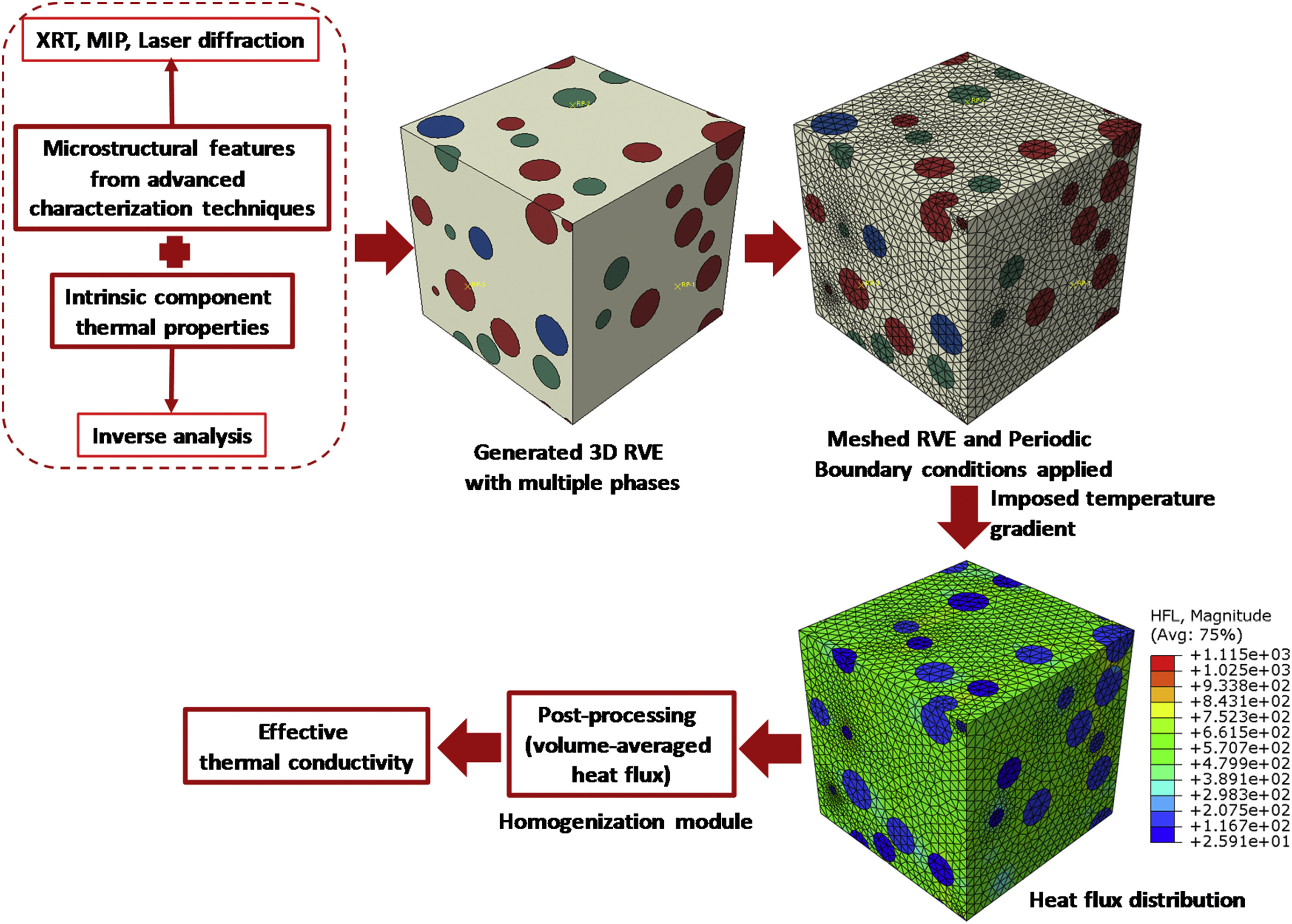Citation
Das, S.; Aguayo, M.; Rajan, S.R.; Sant, G.; Neithalath, N. Cement and Concrete Composites 2018, 87, 20-28.
Das, S.; Aguayo, M.; Rajan, S.R.; Sant, G.; Neithalath, N. Cement and Concrete Composites 2018, 87, 20-28.
This paper presents a microstructure-guided numerical homogenization technique to predict the effective thermal conductivity of a hierarchical cement-based material containing phase change material (PCM)-impregnated lightweight aggregates (LWA). Porous inclusions such as LWAs embedded in a cementitious matrix are filled with multiple fluid phases including PCM to obtain desirable thermal properties for building and infrastructure applications. Simulations are carried out on realistic three-dimensional microstructures generated using pore structure information. An inverse analysis procedure is used to extract the intrinsic thermal properties of those microstructural components for which data is not available. The homogenized heat flux is predicted for an imposed temperature gradient from which the effective composite thermal conductivity is computed. The simulated effective composite thermal conductivities are found to correlate very well with experimental measurements for a family of LWA-PCM composites considered in the paper. Comparisons with commonly used analytical homogenization models show that the microstructure-guided simulation approach provides superior results for composites exhibiting large property contrast between phases. By linking the microstructure and thermal properties of hierarchical materials, an efficient framework is available for optimizing the material design to improve thermal efficiency of a wide variety of heterogeneous materials.
